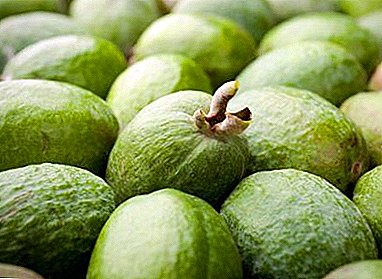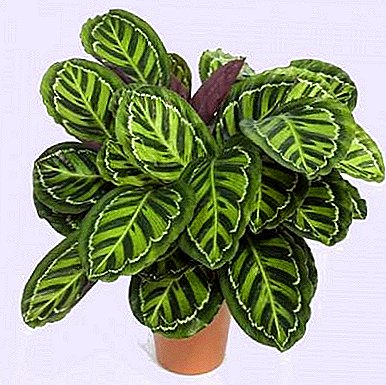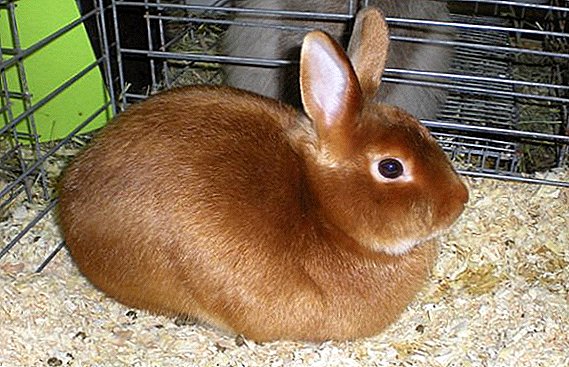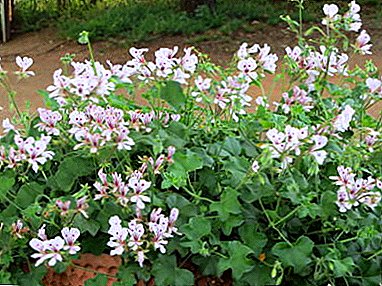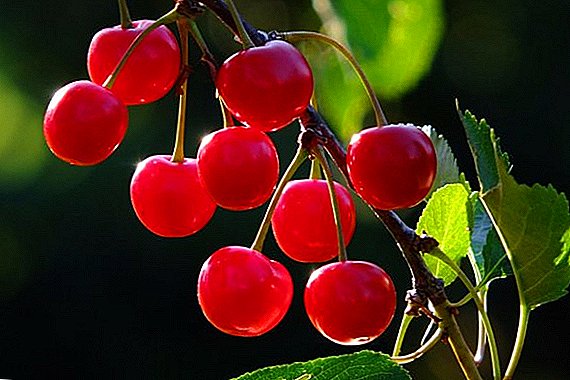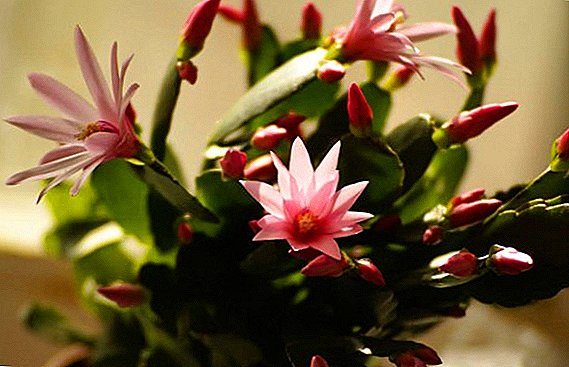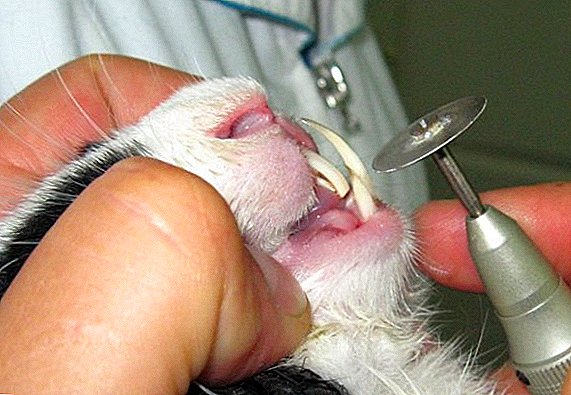 In order to grow healthy rabbits, you need to know some of the nuances associated with their physiology and anatomy. This article focuses on the teeth of fluffies - about the features of their structure, how important it is to maintain them in good condition and what can happen if you do not care for the mouth cavity of rabbits who live at home.
In order to grow healthy rabbits, you need to know some of the nuances associated with their physiology and anatomy. This article focuses on the teeth of fluffies - about the features of their structure, how important it is to maintain them in good condition and what can happen if you do not care for the mouth cavity of rabbits who live at home.
Features of the structure of teeth
The teeth of the eared animals are very strong and grow throughout life. In the wild, animals can simply maintain their health in a healthy state with the help of properly selected coarse food, but in captivity it can be difficult to carry out, so care for the teeth falls on the pet owners.
Important! Rabbits are often mistakenly attributed to rodents precisely because of the jaw structure, but in fact, fluffies belong to the order of lagomorphs.
In adult rabbits
Rabbit's jaw is different in that animals have very powerful incisors (4 on top and 2 on the bottom), which grow throughout the life of the fluffy. The incisors are followed by an empty space of 2-3 cm, which is formed due to the absence of canines, and then the molars. In total, adult animals have 28 teeth, 6 incisors and 22 chewing (indigenous) ones.  They are uneven, 16 of them are located on the upper, and 12 on the lower jaw. The incisors of animals are pushed forward, their front walls are covered with enamel, and there is no enamel on the back side, this helps teeth to grind more and be sharp, and rabbits, respectively, can eat solid food.
They are uneven, 16 of them are located on the upper, and 12 on the lower jaw. The incisors of animals are pushed forward, their front walls are covered with enamel, and there is no enamel on the back side, this helps teeth to grind more and be sharp, and rabbits, respectively, can eat solid food.
Rabbit chewing teeth are divided into root and pre-root teeth; they are necessary for animals to rub and chew rough vegetable food.
In order to properly organize the care and maintenance of eared animals, it is necessary to become familiar with all the subtleties of breeding rabbits at home.
Young
Baby teeth in baby rabbits are formed even in utero, and to the light they appear already with 16 teeth. During the first month of life, or more precisely from the 18th day, they fall out and are replaced by permanent ones, thus, the young already have 28 teeth per month. 
Diseases associated with the teeth
Due to improper nutrition and oral care, animals may have health problems. Let's look at the main diseases of rabbits that may arise for this reason.
Did you know? The name Spain comes from the ancient finikian word "gi-spanini", which means "the bank of rabbits".
Malocclusion
Abnormal occlusion, that is, abnormal closure of the jaws, is called malocclusion, which can be congenital or acquired. If the disease is not inherited, then the animal may develop in the animal for several reasons, namely:
- Wrong diet In order for the eared teeth to remain healthy, it needs to chew food for a long time and carefully, and therefore it is of great importance what the pet eats. Fresh grass and hay are great food for these animals, which they spend about 5-10 minutes chewing on. During this time, their teeth are uniformly ground. But dry and high-calorie feed should be avoided, as they do not require long chewing and contribute to rapid saturation. With food, the pet should receive enough salts of silicon (silicates), which are also necessary for uniform grinding of bone processes. Silicates in sufficient quantities are found in grass, vegetables, fruits and tree bark.
- As a result of jaw injury.
- After suffering a bacterial infection in the oral cavity.
 To determine that a pet has a low occlusion, by the following symptoms:
To determine that a pet has a low occlusion, by the following symptoms:- decreased appetite;
- the pet does not comb and does not clean the hair;
- does not eat night feces;
- the rabbit refuses to favorite solid food, even hay and grass;
- the teeth of the animal turn yellow, and at the roots darken;
- violations of the gastrointestinal tract and as a result - the absence of a chair;
- bleeding and inflammation in the mouth;
- excessive drooling, wet fur around the mouth;
- the animal begins to creak teeth;
- weight loss of the animal;
- weakness and lethargy.
If malokkluziya confirmed, it is necessary to take action and help the animal. First of all, you should wash the inflamed mucous membranes, if any, and treat them with anti-inflammatory drugs.
We recommend to learn how to treat: cysticercosis, stomatitis, Pododermatitis, meteorism, viral hemorrhagic disease, conjunctivitis, pasteurellosis and scabies in rabbits.
Then, depending on the neglect of the situation, the teeth are trimmed with special tongs or sawed.  Cut the teeth of the rabbit with tongs
Cut the teeth of the rabbit with tongs
Abscesses and suppurations
Due to improper bite, too coarse food, injuries, very sharp or long teeth, wounds form in the rabbit's mouth, which can begin to fester, and if anaerobic bacteria are connected, then, as a result, an abscess can develop, which is a great danger to the health of the eared mouse. .
Did you know? During the meal, the rabbit performs more than 120 movements with its jaws in 60 seconds.
An abscess is terrible because it causes pain, intoxication, and if an internal rupture occurs, pus can enter the bloodstream of the animal and lead to its death. Therefore, it is extremely important to know the main symptoms of this disease in rabbits, in order to diagnose in time and proceed with the immediate treatment of the disease, these include:
- Abundant salivation.
- Swelling.
- Decreased appetite and refusal to eat.
- Increased body temperature.
 At the slightest suspicion that the rabbit has an abscess, it is necessary to contact the veterinary clinic, only a specialist can establish the diagnosis and prescribe the correct treatment. This problem cannot be solved without surgery, properly selected antibiotics, and then probiotics to normalize the intestinal microflora.
At the slightest suspicion that the rabbit has an abscess, it is necessary to contact the veterinary clinic, only a specialist can establish the diagnosis and prescribe the correct treatment. This problem cannot be solved without surgery, properly selected antibiotics, and then probiotics to normalize the intestinal microflora.Rabbitheads should consider the causes of the appearance and methods of treatment of abscess in rabbits.
After the operation, the animal will need rehabilitation, which includes the elimination of inflammation, healing and elimination of drainage after complete healing of wounds. 
Possible rabbit teeth problems
In addition to the above problems with root processes in the oral cavity, other troubles may arise due to improper growth and positioning of the teeth.
Why teeth grit
The creaking and tapping of the jaws do not always indicate that the pet has health problems, but still it is necessary to listen to such moments. If a rabbit squeaks with teeth very loudly, then this may mean that it hurts, and he experiences discomfort, but his behavior changes, he will become sluggish and lose his appetite.
One of the main needs of domestic rabbits is the need for eating. Read about when and how to feed eared animals at home, as well as consider the feeding habits of rabbits in winter.
This behavior of the pet should not be left without attention of the owner, the animal should immediately show the veterinarian.
But if the eared one is in a wonderful mood, it retains its curiosity and appetite, but at the same time it quietly creaks its teeth, it does not need to worry, it is only a manifestation of feelings and emotions and means only that the pet is calm and satisfied. 
What to do if a tooth broke
A broken tooth of a pet is, of course, unpleasant, but you should not panic about it. The fact is that the teeth of rabbits grow back quickly enough, in just 2-3 weeks. Examine the mouth of the animal and, if necessary, trim or file adjacent teeth so that the jaw is properly closed, and the animal is comfortable to chew.
You will probably find it helpful to learn how to protect rabbits from mosquitoes.
Preventive measures
It is always better to prevent a problem, so it’s very important to follow simple rules when caring for rabbits, which will help preserve their health and prolong their life. The main preventive measures include:
- Proper nutrition - in the diet of the animal must contain vitamins and minerals, as well as coarse and juicy food.
- Pet cage must be safe - it should not be sharp objects that can cause injury.
- Regular inspections - it is possible to carry out independently or to address to the veterinarian 1 time in 3-4 months.
 These are the structural features of the teeth of rabbits and the list of problems that may arise with them. You can avoid possible troubles with the help of proper care and attentive attitude to pets.
These are the structural features of the teeth of rabbits and the list of problems that may arise with them. You can avoid possible troubles with the help of proper care and attentive attitude to pets.

